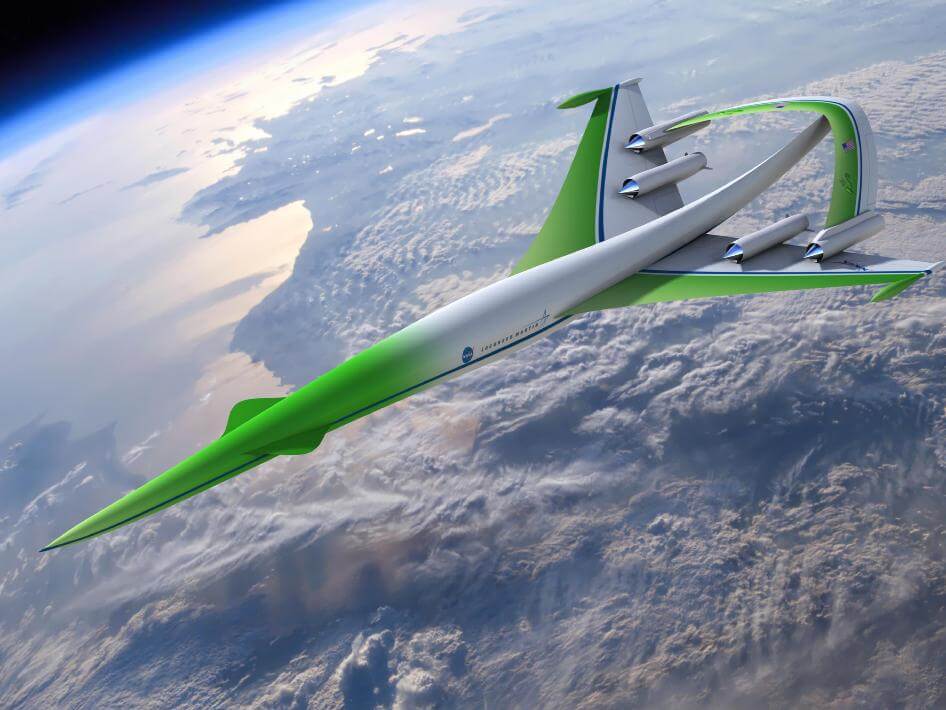How do you prevent traffic jams in the sky and how do you reduce air pollution and the supersonic booms produced by airplanes? The biggest airlines in the world are facing exactly these challenges. Get a glimpse of the planes of the future

Amber dew Galileo
The general public knows NASA as the American space agency, but the acronym NASA stands for National Aeronautics and Space Administration. The first "A" in NASA's name indicates a long tradition of aeronautical research, aircraft design and impressive breakthroughs in diverse fields of aviation.
Shortly after World War II, development of a series of experimental aircraft, known as the "X planes" began in the United States. The body that preceded NASA, NACA, was involved in these ventures. In the 15s, NASA was a partner in the research planes of the US Air Force, and as part of its involvement in the field of research, test pilots on its behalf were also included in these programs. The best known of them is Neil Armstrong, who before being an astronaut (and the first mortal to walk on the moon) flew the X-XNUMX research plane.
In recent years, NASA has led the way in the characterization and planning of a new generation of passenger planes, some of which are supposed to fly in 2025 and some of which, if they will be ready for actual flights, only towards 2035. The planes reviewed in this column are currently in the initial stages of research, characterization and development, and at this stage it is not clear whether Eventually they will be built at all.
The future is in their hands
The design of the passenger planes of the future that will fly us from 2025 onwards is extremely complex and deals with a variety of requirements, the main of which is energy efficiency - saving fuel on the one hand, and a significant reduction in air pollution on the other hand. Additional aspects of environmental friendliness are also included in the design of the planes of the future, including the reduction of the noise nuisance of the planes: both during takeoff and landing and in the dimming of the supersonic "boom" in planes that move faster than the speed of sound.
At the end of 2010, NASA granted funding to the companies "Boeing", "Lockheed Martin" and "Northrop-Grumman" in order to develop initial concepts of passenger planes, which could take off as early as 2025. Looking at the three concepts presented by the companies, very different configurations of aircraft emerge, demonstrating a different approach to the technological challenge.
Among the concepts were a "green" plane, required to operate in denser skies than today's, with improved safety compared to current planes. NASA's requirements were a cruising speed of at least 85 percent of the speed of sound (0.85 Mach), a flight range of about 10,000 km (7,000 miles), and the ability to carry cargo (or passengers) of up to 45 tons. The decision on the winning company will be made during 2011.
Traffic jams in the sky
Under the outer shell of the planes will be integrated innovative technologies in the field of materials, propulsion and control systems. The airplanes of the future will use new alloys of metals, which have the ability to "memory" a shape (such as materials that can be inserted into airplanes in a spatial shape structure, and if they deform, they return to it).
Advanced composite materials will also be used, including Carbon Nano Tubes, a self-repairing outer sheath, efficient electric motors, a wing with variable geometry and simulated windows for airplane passengers.
NASA is also engaged in preliminary work on the planes for 2035, the technological challenges associated with them overshadow the planes of the present and even the planes of the near future. Among other things, it is possible to mention the following requirements formulated by NASA personnel: a reduction of 71 decibels in the intensity of the noise emitted by the airplanes in relation to the regulations of the American Aviation Administration that are used today, a reduction of 75 percent of the emissions of pollutants into the atmosphere - especially nitrogen oxides - an improvement of at least 70 percent in fuel consumption and the efficient utilization of it in the airplane engines, compared to the situation today, and maximum adaptation of the airplanes of the future to operation from small and urban airports, for the purpose of reducing the "traffic jams in the skies".
Quiet planes
The next step in developing the airplanes of the future is to identify the technologies required to build the airplanes of the future, and in particular to identify the technologies that require more time to move from the laboratory to the sky. These technologies will be discovered during 2011, and considerable resources will be invested in them in order to make them cheaper and more accessible to the aircraft industries.
It is interesting to note NASA's efforts in the field of a supersonic passenger plane. As you remember, the USA tried to develop (through Boeing) a supersonic passenger plane that would compete with the Anglo-French Concorde. The construction of the plane was canceled in the early seventies, and since then the US has not returned to engage in civil supersonic aviation.
In Japan, a supersonic passenger plane with hydrogen propulsion is under development, and it is not impossible that NASA's considerations include the positioning of the United States as a leader in the field. It doesn't matter what your flight destination is - jumping to a nearby destination or flying across the ocean - the planes of the future, whose design can already be glimpsed today, will be fast, efficient, economical and much safer than today's planes.
Tal Inbar is the head of the Center for Space Research, the Fisher Institute for Strategic Air and Space Research, and the chairman of the Israel Space Association
